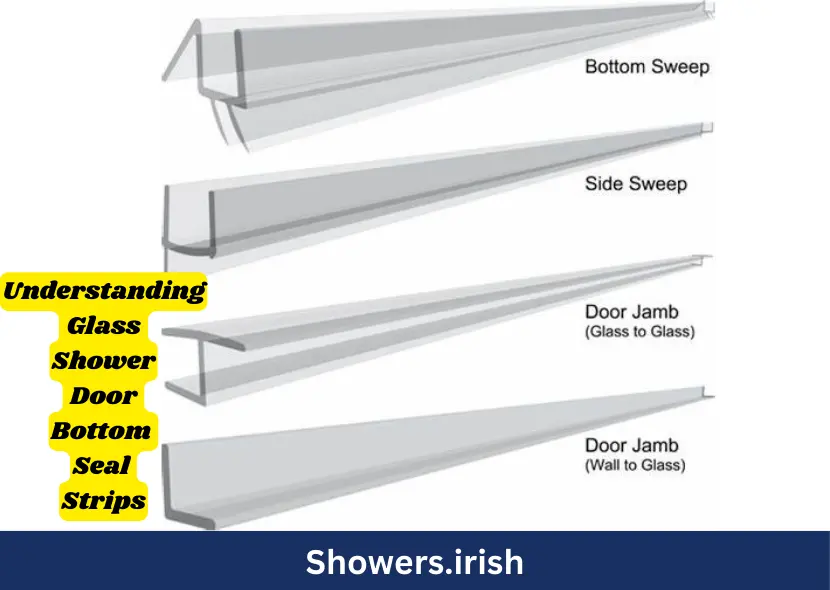Glass shower screens are a modern, elegant addition to any bathroom, but ensuring they are properly sealed is crucial for maintaining their functionality and longevity. This guide will explore all aspects of glass shower screen seals, from their importance and types to installation and maintenance tips.
Understanding the Importance of Glass Shower Screen Seals
What is a Glass Shower Screen Seal?
A glass shower screen seal is a strip, usually made from rubber or plastic, that fits around the edges of a glass shower door or screen. Its primary function is to prevent water from leaking out of the shower area, keeping your bathroom dry and clean.
Benefits of Using Glass Shower Screen Seals
Using glass shower screen seals has several benefits. They help maintain the cleanliness of your bathroom by preventing water leakage, reducing the risk of slips and falls. Additionally, seals enhance the aesthetic appeal of your bathroom by providing a neat, finished look to the shower screen.
Common Problems Without Seals
Without proper seals, water can escape from the shower area, leading to wet floors and potential water damage. This can cause mold and mildew growth, posing health risks and increasing maintenance costs. Furthermore, water leakage can damage bathroom fixtures and flooring over time.
Types of Glass Shower Screen Seals

Bottom Seals
Bottom seals are attached to the bottom edge of the shower door. They are essential for preventing water from leaking out onto the bathroom floor. Bottom seals come in various designs, including straight, angled, and sweep seals, each catering to different shower configurations.
Side Seals
Side seals are fitted along the vertical edges of the shower door. These seals ensure that water does not escape through the sides, especially when the door is closed. Side seals are typically made from durable materials like PVC or rubber.
Top Seals
Top seals are less common but are used in certain shower designs to provide an extra layer of protection against water leakage. They are attached to the top edge of the shower door and are particularly useful in preventing steam and water vapor from escaping.
Magnetic Seals
Magnetic seals are used in shower doors that have a magnetic closure system. These seals contain magnetic strips that help keep the door securely closed, preventing water leakage. Magnetic seals are an excellent option for frameless shower doors.
How to Install Glass Shower Screen Seals

Preparing for Installation
Before installing new seals, it is important to remove any old or damaged seals. Clean the edges of the shower screen thoroughly to ensure a smooth and secure fit for the new seals. Measure the edges of the shower door to cut the seals to the appropriate length.
Installing Bottom Seals
To install bottom seals, align the seal with the bottom edge of the shower door. Press it firmly in place, ensuring it fits snugly. For added security, some bottom seals come with adhesive backing or require the use of sealant.
Installing Side and Top Seals
Side and top seals are typically installed in a similar manner. Align the seal with the edge of the shower door and press it into place. Ensure that the seal fits securely and covers the entire edge to prevent any water leakage.
Using Magnetic Seals
For magnetic seals, align the magnetic strips with the corresponding magnetic parts on the shower door. Ensure that the magnets are properly aligned to create a tight seal when the door is closed. This will prevent water from escaping through the gaps.
Maintenance Tips for Glass Shower Screen Seals

Regular Cleaning
Regular cleaning is essential to maintain the effectiveness of your shower screen seals. Use a mild detergent and a soft cloth to wipe down the seals, removing any soap scum, mold, or mildew. Avoid using harsh chemicals that could damage the seals.
Inspecting for Damage
Periodically inspect your shower screen seals for any signs of wear and tear. Look for cracks, tears, or discolouration. If you notice any damage, replace the seals promptly to prevent water leakage and maintain the cleanliness of your bathroom.
Replacing Worn-Out Seals
Replacing worn-out seals is crucial to ensure the continued effectiveness of your shower screen. Follow the installation steps outlined earlier to replace old seals with new ones. Regularly replacing seals will help prevent water damage and keep your bathroom in top condition.
Preventing Mold and Mildew
To prevent mold and mildew, ensure your bathroom is well-ventilated. After showering, wipe down the seals and shower screen to remove excess moisture. Consider using a dehumidifier to reduce humidity levels in your bathroom.
Conclusion
Glass shower screen seals are an essential component of any modern bathroom, providing numerous benefits such as preventing water leakage, enhancing safety, and maintaining a clean and aesthetically pleasing environment. By understanding the different types of seals, how to install them, and how to maintain them, you can ensure the longevity and functionality of your shower screen.
Frequently Asked Questions (FAQs)
1. What is the purpose of a glass shower screen seal? A glass shower screen seal prevents water from leaking out of the shower area, keeping your bathroom dry and reducing the risk of slips and water damage.
2. How do I know when my shower screen seals need replacing? Inspect your seals regularly for signs of wear and tear such as cracks, tears, or discoloration. If you notice any damage or if water starts leaking, it’s time to replace the seals.
3. Can I install glass shower screen seals myself? Yes, installing shower screen seals is a straightforward process. Ensure the edges are clean, measure and cut the seals to size, and press them firmly into place. Some seals may come with adhesive backing or require a sealant.
4. How do I clean and maintain my shower screen seals? Clean your shower screen seals regularly with a mild detergent and a soft cloth. Avoid using harsh chemicals. Regularly check for damage and replace the seals as needed to maintain their effectiveness.
5. What types of glass shower screen seals are available? There are several types of seals, including bottom seals, side seals, top seals, and magnetic seals. Each type is designed to fit different parts of the shower door and prevent water leakage effectively.
Related Post: Choosing the Right Glass Shower Door Bottom Seal Strips
Selecting the appropriate glass shower door bottom seal strips is crucial for maintaining a dry and clean bathroom. These strips are designed to fit snugly at the bottom of your shower door, preventing water from leaking out and causing damage. When choosing a seal strip, consider the material, length, and type of attachment. High-quality materials like PVC or rubber offer durability and effective sealing. Ensure the strip is the correct length for your shower door, and check if it has adhesive backing or requires a sealant for installation. Regular maintenance, such as cleaning and inspecting for damage, will prolong the life of your seal strip. For more information on selecting the best glass shower door bottom seal strips, check out this comprehensive guide: Glass Shower Door Bottom Seal Strips.
Credit Website: www.ireland.ie/
